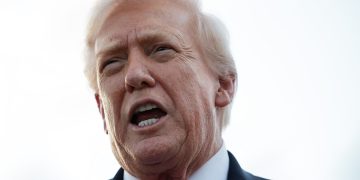
You will be surprised to know that Singapore's economic situation was not already there. There was a time when there was abject poverty in Singapore and slums all around. The country was plagued by unemployment and poverty. When it was separated from Malaysia in 1965 and made independent, it had no resources. No oil, no arable land or coal. There was nothing. But the growth spurt Singapore has achieved over the past few decades has become an inspiration to the entire world.
How did this slum-filled country become an economic superpower today?
Singapore was a British colony until 1965 and later joined the Federation of Malaysia. However, ethnic, political and economic differences forced it out of the federation. When Singapore gained independence, it was a very poor island nation. Its unemployment rate was 14%. Per capita income was only $500. Most people lived in slums. There was a shortage of drinking water in the country, it had to import water from Malaysia.
Due to lack of resources and social instability, the world did not believe that Singapore could survive. But that's where his turning point came from.
Lee Kuan's visionary leadership
Lee Kuan Yew, Singapore's first Prime Minister, played a crucial role in taking the country from poverty to prosperity. He was Prime Minister from 1959 to 1990 and during this time he reshaped Singapore with modern thinking. He determined the direction of development on three main principles.
- Honest and capable leadership
- Education and skill development
- Industrialization and foreign investment
Lee Kuan Yew enacted strict laws to root out corruption. He paid heavy wages to government officials so that they would refrain from bribery. This is the reason why today Singapore is counted among the least corrupt countries in the world.
Investing in education and human capital
Lee Kuan Yew believed that “Singapore does not have oil or gold, its real resources are its people.” Hence he gave priority to education. In the 1960s and 1970s, Singapore established vocational training centers and institutes of technology to prepare young people for industrial jobs. As youth prepare for industrial jobs. English was made the medium of education so that citizens could work in multinational companies.
Industrialization and Foreign Investment Strategy
Singapore developed a new economic strategy in the 1960s. Export-oriented industrialization The government invited American, Japanese, and European companies to set up factories in Singapore. Several steps were taken for that too.
- Lower corporate taxes
- Flexibility in labor laws
- World class ports and transport network
- Political stability and transparency
This policy resulted in the arrival of major companies such as IBM, HP, Siemens, Shell and Sony in Singapore. Gradually, the country became a center for electronics, chemicals, shipbuilding and financial sectors.
5 World class infrastructure and port system
Singapore's Changi Airport and Singapore Port are among the most efficient transport hubs in the world. The Port of Singapore is the second busiest port in the world, handling thousands of container ships every day.
Since the 1970s, the government has built modern and affordable houses through the Housing Development Board (HDB), which has led to the eradication of slums. Today, about 80% of residents live in HDB flats, which have a clean, organized and safe environment.
6. Economic diversification and rise of service sector
After the 1980s, Singapore entered the services sector in addition to industry. The country established itself as a financial hub in Asia.
Singapore exemplifies innovation and efficiency in all sectors, including banking, insurance, shipping, logistics, education and medical tourism. Today, Singapore is the second largest financial center in Asia and is home to over 200 international banks.
7. Technological Innovation and 'Smart Nation' Policy
In the 21st century, Singapore has made digital technology a part of its new development strategy. In 2014 there was launched the 'Smart Nation Initiative', which aimed to digitally connect the entire country.
Singapore is now making strides in artificial intelligence (AI), fintech, biotechnology and clean energy sectors. Technologies like 5G, IoT and Smart City have become a part of life here.
8 Cleanliness, discipline and law and order
The cleanliness and discipline of Singapore's streets is world famous. Spitting or littering in public is considered a crime here.
Law and order is so strong that the crime rate is among the lowest in the world. It is this discipline and security that has given foreign investors confidence that their money will be safe.
9. Political stability and long-term planning
Political stability has been a key factor in Singapore's success. For the past six decades, his government has consistently implemented long-term planning. Policies do not change with changing governments. This continuity enables the country to remain globally competitive.
10. Today's Singapore – An Economic Example for the World
Today, despite a population of only 5.7 million, Singapore's GDP exceeds approximately $450 billion (2024). The country is one of the top economies in the world. Singapore has consistently ranked in the top 5 countries in the World Bank's Ease of Doing Business report. The level of corruption here is one of the lowest in the world. Education, health and transport are world class. Singapore is no longer just a country, but a 'development model', especially for countries that want to progress despite limited resources.
This is how Singapore changed
As the world economy changed, so did Singapore. During its first two decades, Singapore's economy grew at a rate of about 10% annually. Initially, Singapore traded in spices, tin and rubber, then expanded into pharmaceuticals. By 1975, Singapore had established a large industrial base. The share of manufacturing in GDP increased from 14% in 1965 to 22%.
Singapore's standard of living is now much higher than that of a country like France, and is poised to take the top spot in the world soon. For example, Singapore's infant mortality rate has improved faster than any other country, as has the Human Development Index.
Also Read: Why Indian Govt Forced To Rein In Gujarat's Richest Maharaja Of Vadodara State – Read
. Source





























